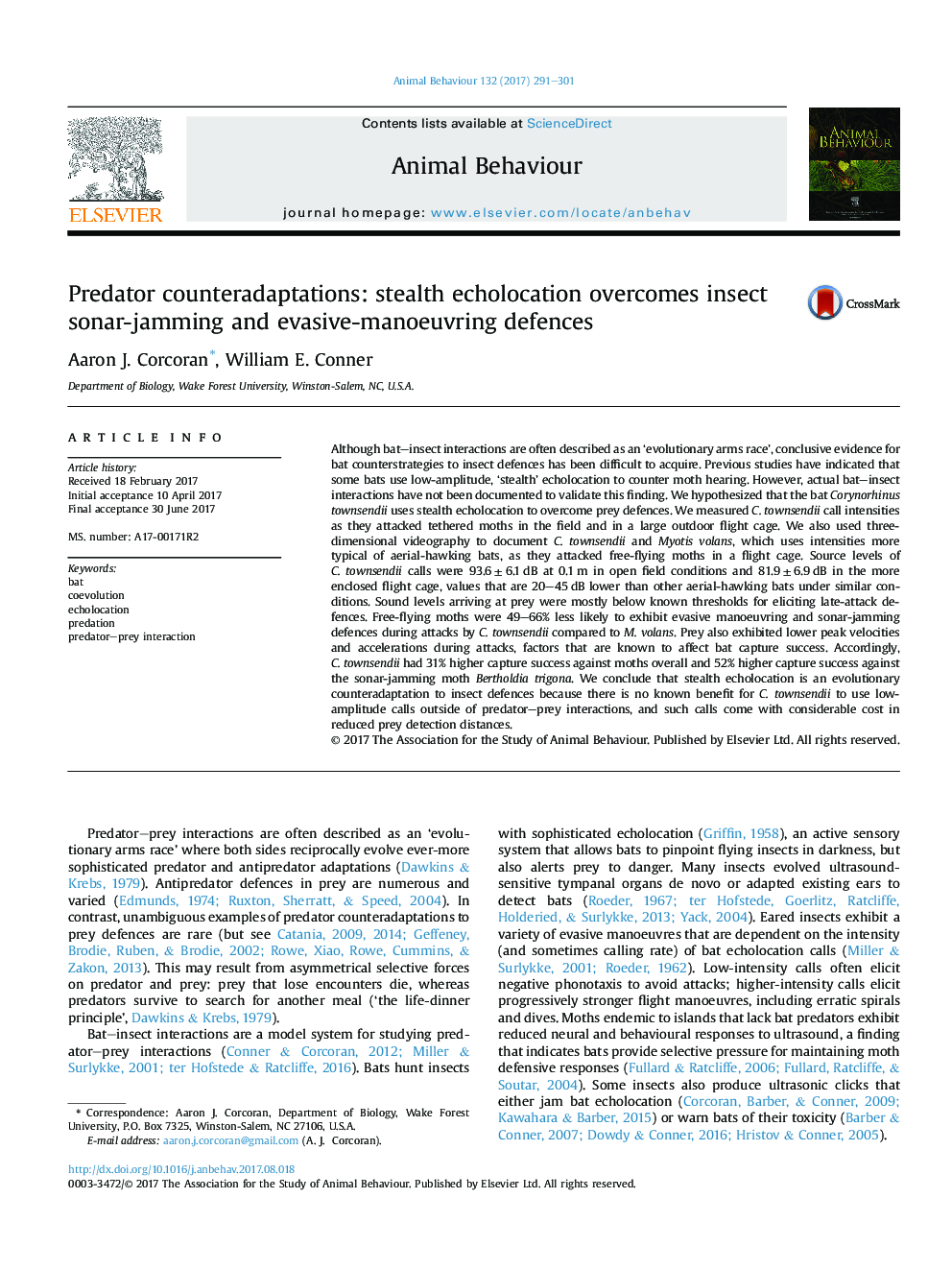| کد مقاله | کد نشریه | سال انتشار | مقاله انگلیسی | نسخه تمام متن |
|---|---|---|---|---|
| 5538303 | 1552196 | 2017 | 11 صفحه PDF | دانلود رایگان |
عنوان انگلیسی مقاله ISI
Predator counteradaptations: stealth echolocation overcomes insect sonar-jamming and evasive-manoeuvring defences
ترجمه فارسی عنوان
انعقاد مقابله با انفجار: انسداد ناشی از سکوت، مانع از انفجار سونار حشرات و دفاع از مانور می شود
دانلود مقاله + سفارش ترجمه
دانلود مقاله ISI انگلیسی
رایگان برای ایرانیان
کلمات کلیدی
موضوعات مرتبط
علوم زیستی و بیوفناوری
علوم کشاورزی و بیولوژیک
علوم دامی و جانورشناسی
چکیده انگلیسی
Although bat-insect interactions are often described as an 'evolutionary arms race', conclusive evidence for bat counterstrategies to insect defences has been difficult to acquire. Previous studies have indicated that some bats use low-amplitude, 'stealth' echolocation to counter moth hearing. However, actual bat-insect interactions have not been documented to validate this finding. We hypothesized that the bat Corynorhinus townsendii uses stealth echolocation to overcome prey defences. We measured C. townsendii call intensities as they attacked tethered moths in the field and in a large outdoor flight cage. We also used three-dimensional videography to document C. townsendii and Myotis volans, which uses intensities more typical of aerial-hawking bats, as they attacked free-flying moths in a flight cage. Source levels of C. townsendii calls were 93.6 ± 6.1 dB at 0.1 m in open field conditions and 81.9 ± 6.9 dB in the more enclosed flight cage, values that are 20-45 dB lower than other aerial-hawking bats under similar conditions. Sound levels arriving at prey were mostly below known thresholds for eliciting late-attack defences. Free-flying moths were 49-66% less likely to exhibit evasive manoeuvring and sonar-jamming defences during attacks by C. townsendii compared to M. volans. Prey also exhibited lower peak velocities and accelerations during attacks, factors that are known to affect bat capture success. Accordingly, C. townsendii had 31% higher capture success against moths overall and 52% higher capture success against the sonar-jamming moth Bertholdia trigona. We conclude that stealth echolocation is an evolutionary counteradaptation to insect defences because there is no known benefit for C. townsendii to use low-amplitude calls outside of predator-prey interactions, and such calls come with considerable cost in reduced prey detection distances.
ناشر
Database: Elsevier - ScienceDirect (ساینس دایرکت)
Journal: Animal Behaviour - Volume 132, October 2017, Pages 291-301
Journal: Animal Behaviour - Volume 132, October 2017, Pages 291-301
نویسندگان
Aaron J. Corcoran, William E. Conner,
